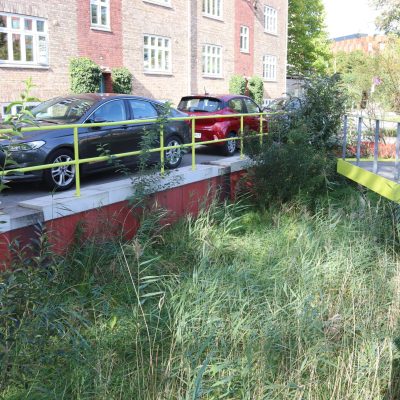What are SuDS?
Sustainable Drainage Systems (SuDS) are a collection of drainage components designed to manage rainfall close to where it falls, to mimic natural drainage and encourage stormwater infiltration, evapotranspiration, reuse, storage, control and passive treatment. SuDS are designed to manage both the flood and pollution risks resulting from urban stormwater runoff and to contribute wherever possible to environmental enhancement and place making. By reducing the rates and volumes of runoff from contributing urban surfaces, they can help improve receiving sewer capacity and lower risks of overflow spills.
What is the StopUP SuDS Tool?

How to use the StopUP SuDS Tool?
1.
Build your scheme by defining each of your SuDS components (over a background map/image if you prefer)
2.
Link your SuDS components together into a network
3.
Add contributing urban areas
4.
Define a suitable outfall
5.
Select or input the rainfall you would like to use
6.
Edit the runoff, evapotranspiration and pollutant values if you wish
7.
Define the criteria you would like the SuDS system to be evaluated against
8.
Define any site information you would like to be displayed on the PDF reports
9.
Run the model
10.
Explore the results!
How does the StopUP SuDS Tool work?
The StopUP SuDS Tool is a simple volume balancing tool evaluating each SuDS component individually. The SuDS are represented as simple storage reservoirs which use up to three storage layers (‘drainage’, ‘soil’ and ‘surface’) and transfer water between the layers using simple rules. Unlike more complex drainage software, the lateral routing through the SuDS and through connecting pipework are not represented and the hydraulic influence of downstream SuDS is simplified. The water quality model is not physically based but uses a pollutant wash-off model combined with average event mean concentrations reflective of different land use types. The efficiency of SuDS to remove pollutants reflects observed removal rates for typical components (based on measured influent and effluent concentrations published in summaries of data held within the BMP database. (https://bmpdatabase.org)
Ready to have a go?
The User Guide is aimed at providing enough information to get you going with building and running the StopUP SuDS Tool. If you would like more technical information on the tool please email support.stopup@hrwallingford.com and we can share a Technical Guidance document.
Do you want to provide any feedback?
The StopUP project runs until August 2025 and in addition to this the StopUP SuDS Tool will be further developed between February 2025 and December 2026 as part of SuDS-iQ, a project led by Southern Water, delivered by HR Wallingford and funded by the Ofwat Innovation Fund. https://waterinnovation.challenges.org/winners/suds-iq/.
If you have any feedback or undertake any testing of the tool against other drainage models or observed data we would be grateful if you can share those with us at support.stopup@hrwallingford.com.


